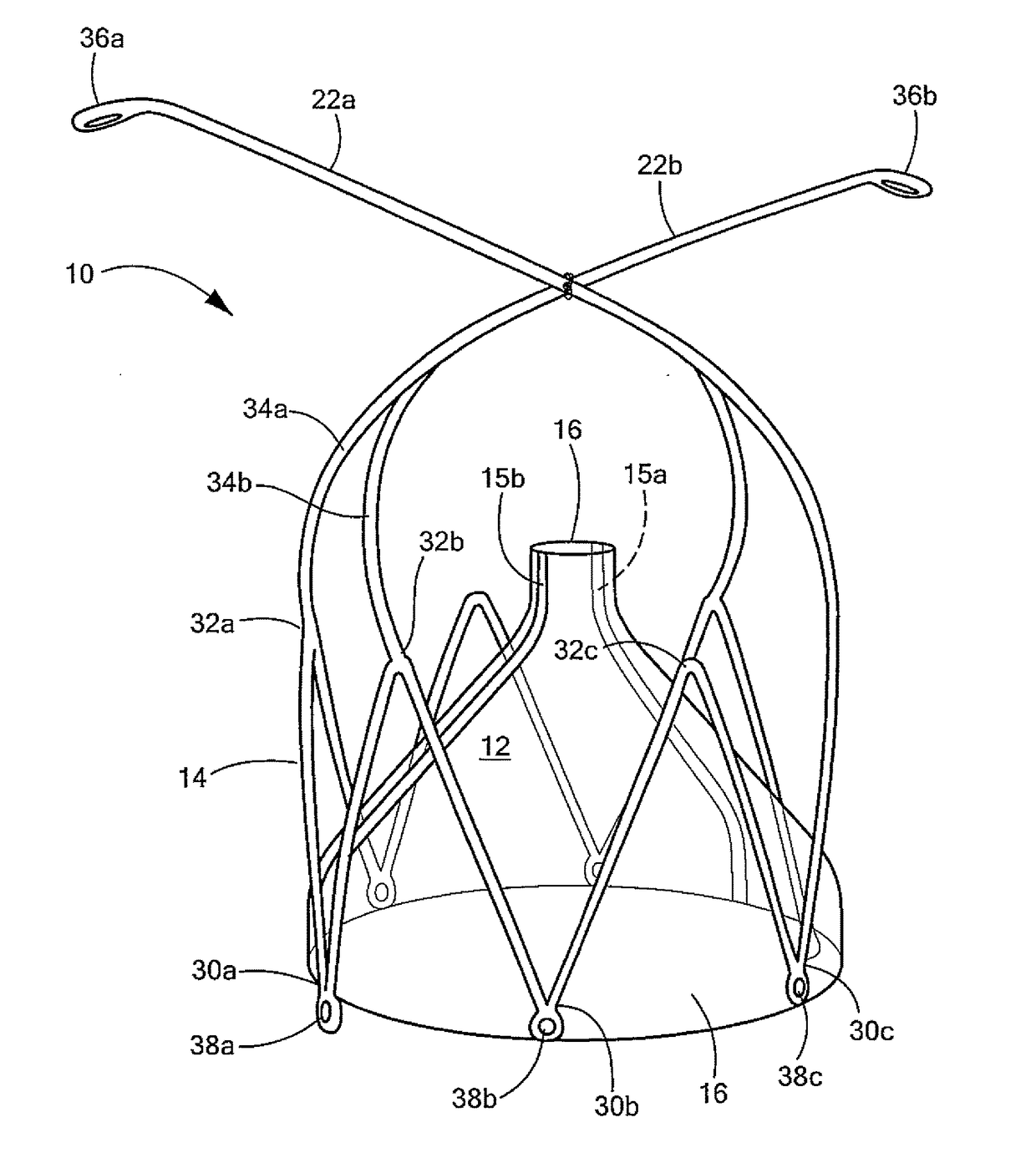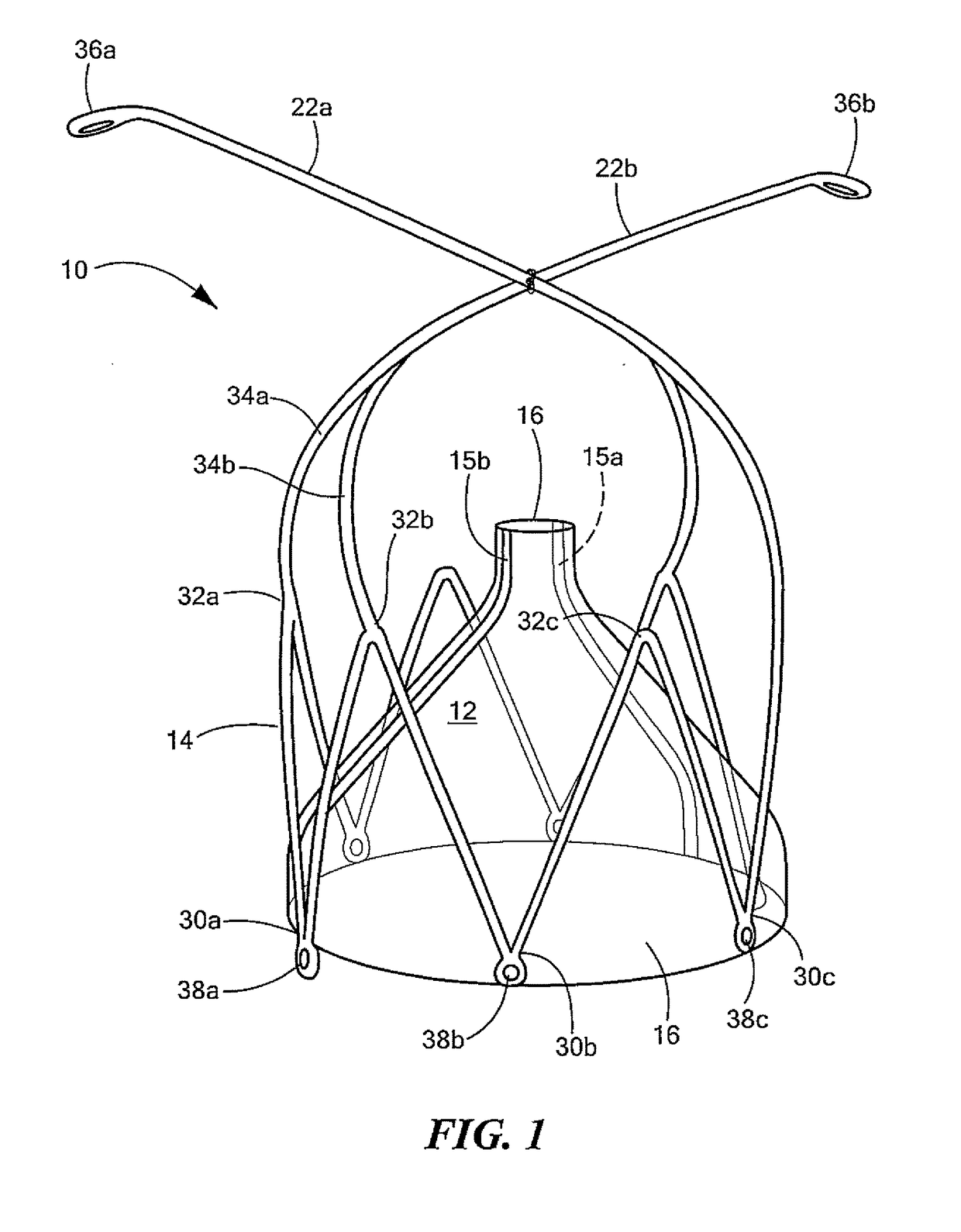Transcatheter device and minimally invasive method for constricting and adjusting blood flow through a blood vessel
a transcatheter device and minimally invasive technology, applied in blood vessels, medical science, surgery, etc., can solve the problems of inability or unsatisfactory the leading cause of infant death from chd, and the inability to complete surgical repair in infancy. , to achieve the effect of influencing the treatment approach
- Summary
- Abstract
- Description
- Claims
- Application Information
AI Technical Summary
Benefits of technology
Problems solved by technology
Method used
Image
Examples
Embodiment Construction
[0019]Aside from the preferred embodiment or embodiments disclosed below, this invention is capable of other embodiments and of being practiced or being carried out in various ways. Thus, it is to be understood that the invention is not limited in its application to the details of construction and the arrangements of components set forth in the following description or illustrated in the drawings. If only one embodiment is described herein, the claims hereof are not to be limited to that embodiment. Moreover, the claims hereof are not to be read restrictively unless there is clear and convincing evidence manifesting a certain exclusion, restriction, or disclaimer.
[0020]One or more embodiments of the transcatheter device and minimally invasive method for constricting and adjusting blood flow through a blood vessel of this invention provides a minimally invasive surgery (MIS) device which can be implanted within the main pulmonary artery in order to elevate flow resistance to palliate...
PUM
 Login to View More
Login to View More Abstract
Description
Claims
Application Information
 Login to View More
Login to View More - R&D Engineer
- R&D Manager
- IP Professional
- Industry Leading Data Capabilities
- Powerful AI technology
- Patent DNA Extraction
Browse by: Latest US Patents, China's latest patents, Technical Efficacy Thesaurus, Application Domain, Technology Topic, Popular Technical Reports.
© 2024 PatSnap. All rights reserved.Legal|Privacy policy|Modern Slavery Act Transparency Statement|Sitemap|About US| Contact US: help@patsnap.com










